Vertical Farming is a revolutionary approach to agriculture that allows crops to be grown in vertically stacked layers, offering a sustainable and efficient solution to food production. In the UAE and Saudi Arabia, where arid climates and water scarcity challenge traditional farming methods, vertical Farming presents an opportunity for fresh produce to be grown locally and year-round.
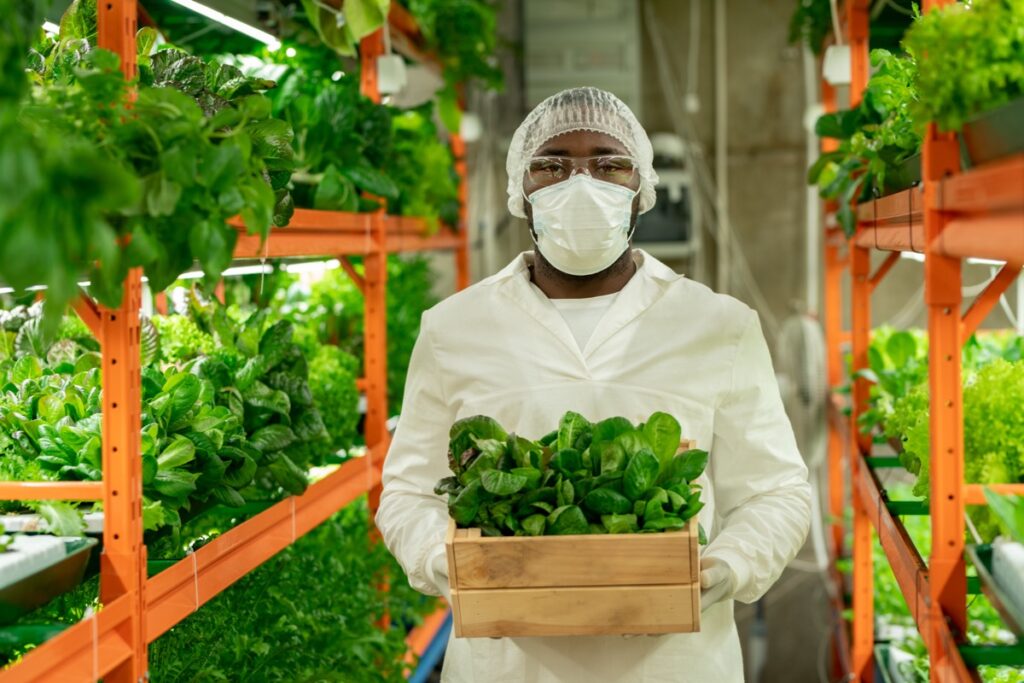
This step-by-step guide will outline the key factors to consider when starting a vertical farm in these regions, including selecting the right crops, choosing the appropriate technology, and ensuring optimal plant growth conditions. With the right approach, vertical Farming can help to address food security concerns and promote sustainable agriculture in the UAE and Saudi Arabia.
Vertical Farming in the UAE and Saudi Arabia
Importance of Vertical Farming in the UAE and Saudi Arabia
- Water scarcity: Vertical Farming can help address water scarcity issues in the UAE and Saudi Arabia as it requires significantly less water than traditional farming methods.
- Arid climate: The arid climate in the UAE and Saudi Arabia presents challenges for traditional farming methods. Vertical Farming can provide a sustainable solution for growing crops in these regions.
- Land scarcity: Land scarcity in urban areas can make it difficult to establish traditional farms. Vertical Farming can be implemented in indoor spaces, such as warehouses or unused buildings, allowing for increased food production in densely populated areas.
- Food security: The UAE and Saudi Arabia rely heavily on food imports, making them vulnerable to fluctuations in global food prices and supply chain disruptions. Vertical Farming promotes food security by allowing for the local production of fresh produce year-round.
- Freshness: The long distances that imported fruits and vegetables travel can result in losing the freshness and nutrient value. Vertical Farming allows producing to be grown and sold locally, ensuring freshness and maximum nutrient value.
- Higher yields: Vertical Farming can produce higher yields per square meter than traditional farming methods, which can help increase food production in a limited space.
- Reduced environmental impact: Using sustainable practices and technology, vertical Farming can reduce the environmental impact of traditional farming methods, such as soil degradation and pesticide use.
- Economic benefits: Vertical Farming can provide economic benefits by creating jobs in the agriculture and technology sectors, reducing food import costs, and promoting local entrepreneurship.
In case you missed it: How to Earn Excellent Income Returns with Commercial Vertical Farming
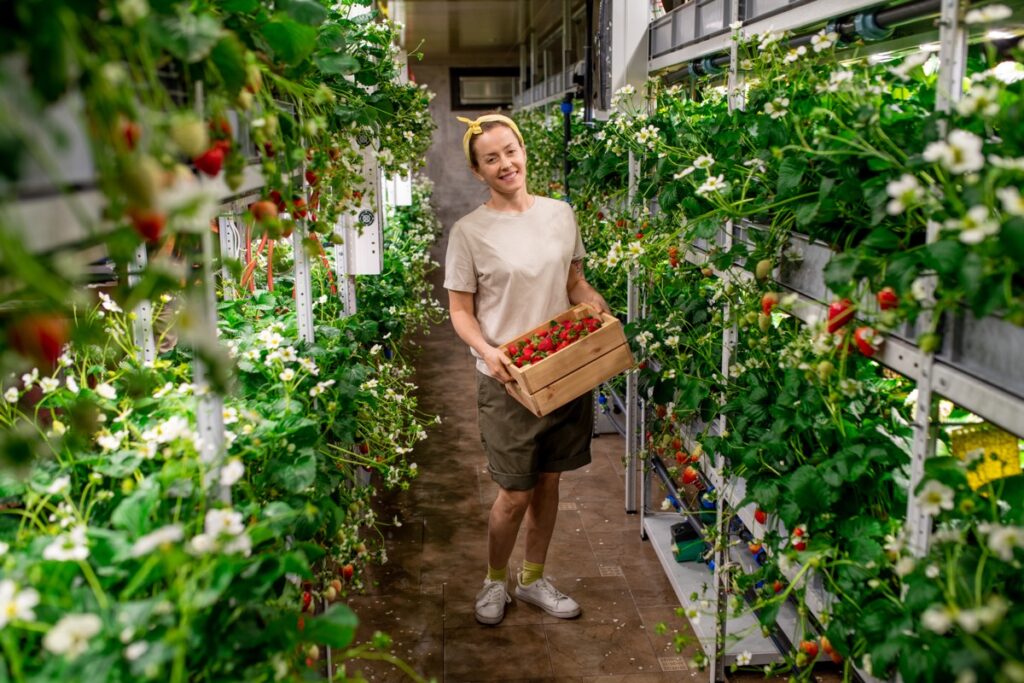
Vertical Farming Trends in the UAE and Saudi Arabia
- The Govt highlighted the challenges facing agricultural development, such as the level of technology used in buildings, facilities, nutrient solutions, lighting, and the types of crops produced.
- The ministry is working on adopting promising modern technologies to support food security in the Kingdom and globally, focusing on vertical Farming.
- The Kingdom has allocated 100 million riyals ($26.6 million) for vertical Farming and has facilitated the procedures for obtaining licenses.
- Vertical Farming is one of the main ways to develop agriculture and conserve water.
- The global market share of vertical Farming was estimated at $3.1 billion in 2018.
How to Start Vertical Farming in the UAE and Saudi Arabia
- Research market demand and suitable crops.
- Select a location with sufficient space and access to utilities.
- Choose a suitable vertical farming system and equipment.
- Source high-quality seeds and growing mediums.
- Hire skilled personnel and develop a cultivation plan.
- Obtain necessary permits and licenses.
- Implement efficient irrigation and lighting systems.
- Monitor and manage plant growth and health.
- Harvest and market the produce.
Factors in Selecting the Right Crops for Vertical Farming in the UAE and Saudi Arabia
- Crop demand: Identify which crops are in high demand in the local market and which have a higher profit margin.
- Water usage: Choose crops that require less water, such as leafy greens, herbs, and some fruits.
- Tolerance to heat: Select crops that can tolerate high temperatures, such as tomatoes, peppers, and cucumbers.
- Nutritional value: Choose crops with high nutritional value and are popular in the local cuisine, such as spinach, kale, and parsley.
- Yield per square meter: Consider crops with a high yield per square meters, such as strawberries, cherry tomatoes, and microgreens.
- Growth cycle: Opt for crops with a shorter growth cycle, allowing for quicker harvests and turnover of crops.
- Shelf life: Choose crops with a longer shelf life, reducing waste and ensuring the freshness of produce.
- Pest resistance: Select crops less susceptible to pests and diseases, reducing the need for chemicals.
In case you missed it: How to Start Aeroponic Vertical Farming: A Step-by-Step Guide for Beginners
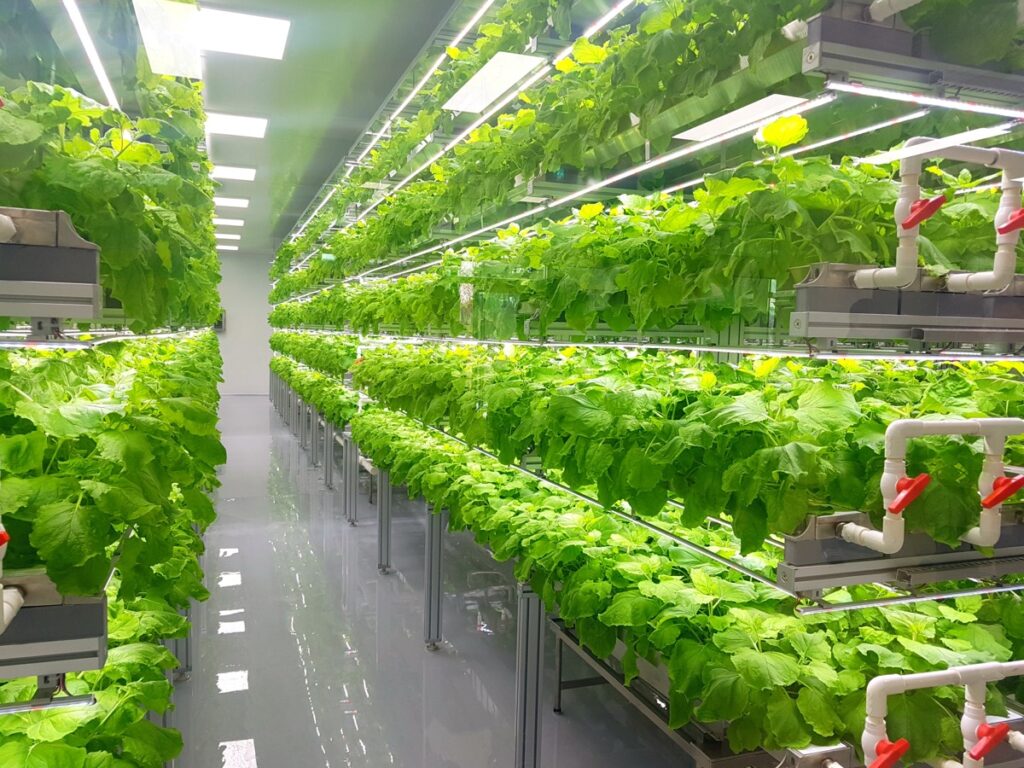
Best Crops to Grow in Vertical Farming in the UAE and Saudi Arabia
- Leafy Greens: Spinach, lettuce, kale, and arugula are all great choices as they require minimal space, have a short growth cycle, and can be harvested multiple times.
- Herbs: Basil, parsley, thyme, and mint are popular herbs in the local cuisine and can be grown easily in vertical farming systems.
- Tomatoes: Cherry and grape tomatoes can be grown vertically and yield high.
- Cucumbers: These can be grown vertically and can tolerate high temperatures.
- Peppers: Jalapeno, bell, and chili peppers can be grown vertically.
- Strawberries: These can be grown vertically using a hydroponic system and have a high yield per square meter.
- Microgreens are nutrient-dense and can be grown quickly in a small space.
- Mushrooms: Vertical farming systems can grow mushrooms like oysters and shiitake.
Selecting Appropriate Technology of Vertical Farming in UAE and Saudi Arabia
Vertical Farming in the UAE and Saudi Arabia considers options such as Deep Water Culture, Nutrient Film Technique, and Drip Irrigation. Look for systems that use water efficiently and can be easily expanded as the business grows. Cost-effective and easy-to-maintain systems. The high-tech farming method involves growing crops indoors in a controlled environment, using artificial light and a nutrient-rich solution instead of soil.
The UAE and Saudi Arabia investing heavily in vertical farming technologies to reduce their dependence on food imports and promote sustainable agriculture. The Dubai-based Bustanica, the world’s largest hydroponic farm, and the AeroFarms AgX vertical farm in Abu Dhabi are examples of the government’s efforts to develop and promote vertical Farming in the region. The Saudi government has partnered with Aerofarm to establish the world’s second-largest farm in Riyadh, Saudi Arabia, in 2024. Construction is expected to begin the following year.
The region is experiencing increased vertical farming ventures and investments in agritech firms with R&D objectives. The Dubai Food Tech Valley Project encourages incorporating sustainable vertical Farming in the region. The Global Vertical Farming Show Dubai is the region’s largest exclusive show, lasting two days and bringing together the complete vertical farming industry’s value chain. This event serves as a hub for networking and the development of the vertical farming industry.
In case you missed it: How to Start Microgreens Vertical Farming: For Indoors, Greenhouse, Growing Tips, Cost, and Benefits
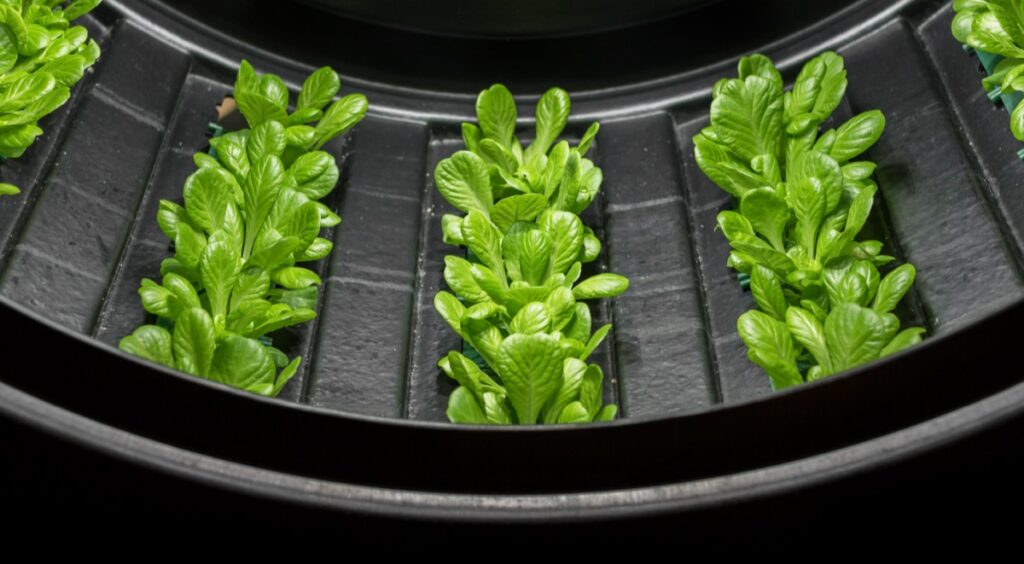
Step-by-Step Guide for Vertical Farming in the UAE and Saudi Arabia
- Conduct feasibility studies: Before embarking on any farming project, it is essential to conduct a feasibility study to determine the project’s viability. Factors such as location, availability of resources, and market demand should be considered.
- Select the appropriate technology: In the UAE and Saudi Arabia, where water is scarce, hydroponics and aeroponics are the most suitable vertical farming technologies. These technologies use minimal water and can be operated using renewable energy.
- Choose the right crops: Leafy greens, herbs, and microgreens are vertical farms’ most commonly grown crops. However, farmers should research the market demand for specific crops and choose those in high demand.
- Secure funding: Vertical Farming requires significant investment, including setting up the farm, buying equipment, and operating costs. Farmers can seek funding from government grants, private investors, or crowdfunding.
- Build the infrastructure: The infrastructure for a vertical farm includes the growing towers, lighting systems, irrigation systems, and climate control systems. Farmers should ensure that the infrastructure is designed to meet the specific needs of the grown crops.
- Source high-quality seeds: The seeds used in vertical Farming are critical to the project’s success. Farmers should source high-quality seeds from reputable suppliers.
- Monitor and manage the farm: Vertical farms require close monitoring and management to ensure that the crops grow well and are free from pests and diseases. Farmers should have a well-trained team to manage the farm.
- Market the produce: Once the crops are ready for harvest, farmers should market their produce to local supermarkets, restaurants, and other potential customers. Building a strong brand and establishing relationships with buyers are critical for success.
FAQs on Vertical Farming
What is Vertical Farming & how does it work?
Vertical Farming grows crops vertically stacked layers using artificial lighting, temperature control, and soil-less farming techniques. This approach allows for year-round, controlled growing conditions and efficient use of space.
In case you missed it: Vertical Farming Business Plan in India: Crops, Subsidies, Companies, Cost, and Profits
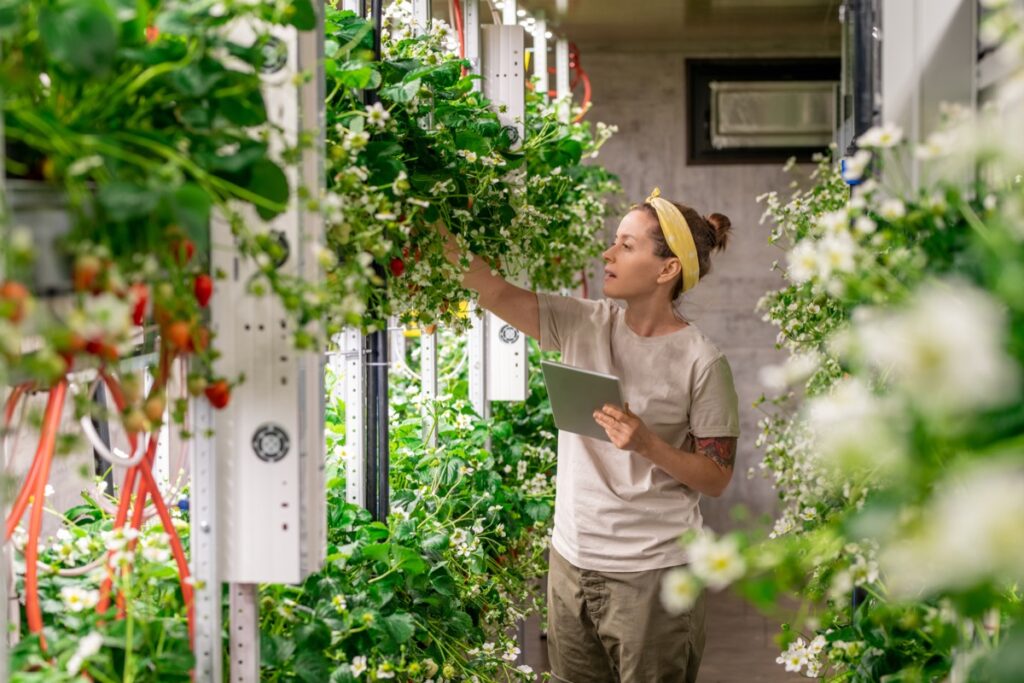
What Crops can be Grown on a Vertical Farm in the UAE and Saudi Arabia?
Leafy greens, herbs, strawberries, and tomatoes are among the crops successfully grown in vertical farms in the region.
What Challenges Might I Face When Starting a Vertical Farm in the UAE or Saudi Arabia?
Challenges you might face when starting a vertical farm in the UAE or Saudi Arabia include high energy costs, limited water resources, extreme temperatures, and limited local expertise. Additionally, navigating the regulations and bureaucracy of these countries can be challenging. Doing thorough research, seeking local partnerships, and investing in advanced technology.
Conclusion
Vertical Farming presents a great sustainable agriculture and food security opportunity in the UAE and Saudi Arabia. While starting a vertical farm may seem daunting, it can be a highly profitable venture with proper planning, research, and investment. With the right approach and implementation, vertical Farming can revolutionize the food industry in these countries.
- Effective Fish Pond Construction Techniques for Beginners
- Irrigation and Water Management in Pineapple Farming
- Blossom to Harvest: Mastering Flowering and Pollination in Papaya Farming
- Pig Fattening Essentials: From Selection to Sale for Beginners
- Raising Wagyu Cattle: A Complete Guide for Premium Beef Production
- Soil Types and Their Water Holding Capacity
- Optimizing Irrigation Schedules for Coconut Groves for Enhanced Yield
- Espresso Your Garden: Coffee Grounds for Healthier Acid-Loving Plants
- The Best Soil Mix for Snake Plants: How to Mix Your Own Snake Plant Soil
- Green Thumb Success: Expert Tips for Cultivating Greenhouse Beans All Year Round
- Bloom All Year Round: The Ultimate Guide to Indoor Hyacinth Care
- Eco-Friendly Gardening: How to Make Liquid Fertilizer from Kitchen Waste
- Ultimate Guide to Grow Anise in Pots: Explore Seed Propagation to Harvesting
- Guide to Raising Chester White Pigs: Discover Breed Facts to Growth Management
- Mastering the Elegance: The Ultimate Guide to Weeping Cherry Tree Care, Planting, and Maintenance
- Ultimate Guide to Planting Garlic in Grow Bags: Growing Strategies for Beginners
- How to Fix Spider Plant Leaf-Related Problems: Natural and Organic Remedies
- 10 Reasons Why Your Tulsi Plant is Shedding Leaves: Home Remedies and Solutions
- Optimizing Growth and Yield: The Advantages of Palm Bunch Ash Fertilizer
- Utilizing Neem Oil Extract as a Natural Pesticide for Hydrangea
- From Soil to Harvest: Various Ways in Which Farmers Can Use AI Tools
- Steps to Encourage and Induce Citrus Flowers: A Comprehensive Guide
- How to Fix Snake Plant Leaf-Related Issues: Natural and Organic Remedies
- Transform Your Garden into a Fragrant Oasis with Raat Ki Rani (Night Blooming Jasmine)
- Discover the Ideal Chicken Breeds for Philippine Farms
- How to Create a Poultry Egg Farm Business Plan for Profits
- Grow Lemon Cucumbers Like a Pro: Insider Techniques for Bountiful Yields
- Ultimate Guide to Caring for Your Pink Princess Philodendron: Tips for Thriving Variegation
- Areca Nut Profit Per Acre: Calculating Yield and Cost of Cultivation
- How Kaveri Chicken is Becoming a More Profitable Breed in Indian Backyards
- Transform Your Barn: 9 Steps to Convert a Horse Stall into a Chicken Coop
- Exploring Suffolk Sheep Disadvantages with Limitations and Challenges
- Guide to Solving Potted Lemon Tree Problems: How to Revive Lemon Tree in Containers
- Steps to Encourage Female Pumpkin Flowers: Best Strategies for More Flowers and High Yields
- Ultimate Guide to Yellow Raspberries: Exploring from Planting to Care
- Ultimate Guide to Planting Ginger in Grow Bags: Growing Strategies for Beginners
